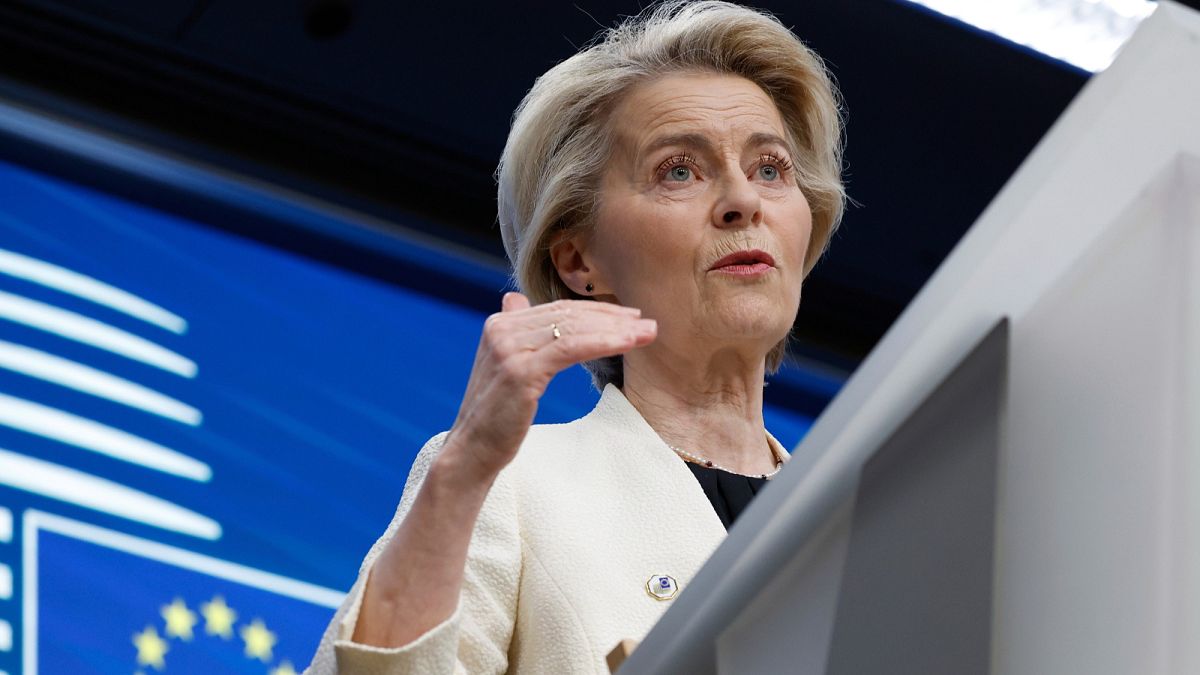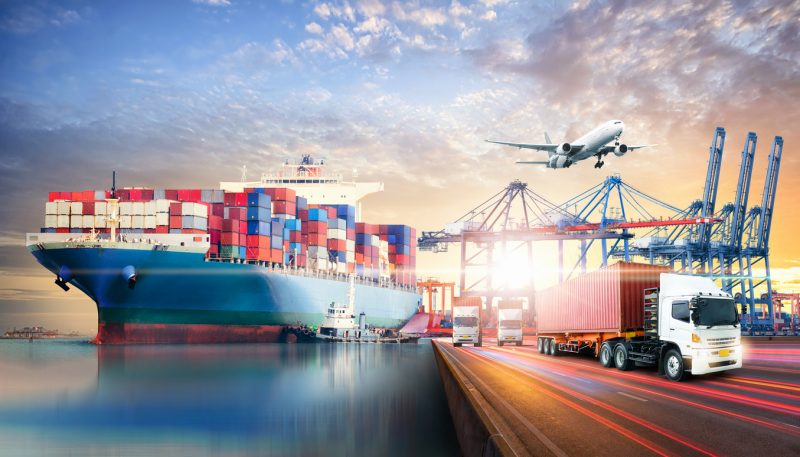
EU Offers to Eliminate Industrial Tariffs as Musk Calls for US-EU Free Trade Zone Amid Rising Tensions
A High-Stakes Trade Gamble: Can Zero Tariffs Ease a Transatlantic Economic Rift or Merely Mask It?
BRUSSELS — With financial markets teetering on every tweet, and policy hawks circling both sides of the Atlantic, a sweeping proposal has landed on the table: zero tariffs on industrial goods between the United States and the European Union. Promoted by Brussels and echoed, albeit more radically, by billionaire entrepreneur Elon Musk, the proposition aims to defuse rising tensions stoked by U.S. President Donald Trump’s sudden imposition of 20% tariffs on EU imports.
What is being billed as a bold move to restore transatlantic trust may instead be a veneer over decades of deep-rooted imbalances. Behind the scenes, European ministers are scrambling to steer the continent away from a trade war cliff, while Washington appears divided, defensive, and politically opportunistic.
The question now isn’t just whether tariffs will be lifted—but whether the foundations of global trade can be reimagined before markets, and diplomatic ties, fracture further.
Brussels Extends the Olive Branch: But Will Washington Grab It?
European Commission President Ursula von der Leyen today delivered a message aimed at the Trump administration's transactional approach. She specifically stated that Europe has "offered zero-for-zero tariffs for industrial goods" and emphasized that "Europe is always ready for a good deal." Her tone balanced conciliation with firmness in this direct appeal to the administration's business-oriented mindset.

Von der Leyen’s announcement follows a closed-door session of EU trade ministers in Luxembourg, where consensus quickly formed around a singular strategy—prioritize de-escalation, not retaliation. While technical teams draft a backup list of countermeasures, the directive from most ministers is clear: avoid a trade war unless there’s no alternative.
Dutch Trade Minister Reinette Klever put it bluntly: “We need to stay calm and respond in a way that de-escalates the situation. The stock markets now show what happens if we escalate immediately. But if necessary, we will be prepared to take countermeasures to bring the Americans to the negotiating table.”
Recent volatility index (e.g., VIX) showing market reactions to trade tensions.
| Date | VIX Closing Level | VIX High | VIX Low | Notes/Market Context |
|---|---|---|---|---|
| April 6, 2025 | 58.85 | 60.13 | 58.24 | Continued high volatility; some sources note this level as of April 6th, others show last data for April 4th. |
| April 4, 2025 | 45.31 | 45.61 | 29.99 | Significant spike (+50.93% from prior day) linked to escalating trade tensions and broad tariff announcements. |
| April 3, 2025 | 30.02 | 45.61 | 29.99 | Sharp increase (+39.56% from prior day) as markets reacted to initial news of sweeping U.S. trade tariffs. |
| April 2, 2025 | 21.51 | 30.02 | 24.93 | Volatility began increasing as new broad-based U.S. tariffs were announced, exceeding market expectations. |
A Maverick’s Entry: Elon Musk Disrupts the Diplomatic Script
Just as talks teetered on the edge of impasse, an unexpected voice from Silicon Valley weighed in with a more sweeping vision. During a video conference at an event hosted by Italy's far-right League party, Elon Musk proposed something far more ambitious: a zero-tariff free-trade zone between the U.S. and Europe, complete with worker mobility rights.
Calling tariffs “outdated relics of an earlier era,” Musk framed his proposal not just in economic terms but as a cultural realignment between two democratic blocs. He lambasted what he described as the “self-defeating protectionism” of U.S. trade advisors, while voicing support for streamlined governance and lower public spending—an ideological echo of his European hosts, including League leader Matteo Salvini and Italian PM Giorgia Meloni.
The Battle of Narratives: Tactical Compromise or Structural Distraction?
The dueling proposals—Brussels' zero-for-zero and Musk’s free-movement utopia—may sound aligned, but experts are parsing their implications very differently.
Symbolism vs. Substance
“There’s no question that tariff elimination reduces friction,” one Brussels-based trade economist said. “But to treat this as a fix to structural trade imbalances is dangerously simplistic.”
Critics argue that the EU’s surplus with the U.S. is not tariff-driven. It’s a function of productivity asymmetries, divergent industrial specialization, and even central bank policies. The 20% tariffs imposed by Trump, though headline-grabbing, barely scratch the surface of these entrenched discrepancies.
EU-US trade balance in goods over the last decade.
| Year | U.S. Trade Deficit with EU (Billions of USD) | Source |
|---|---|---|
| 2024 | $235.6 | U.S. Census Bureau / USTR |
| 2023 | $208.7 (approx. based on $235.6bn deficit in 2024 being 12.9% higher than 2023) | USTR / Calculation |
| 2021 | $219.6 | Bureau of Industry and Security |
Another analyst observed, “This is about who controls the future of supply chains, not about whether a German machine part is 20% more expensive.”
Musk’s Free-Trade Zone: Visionary or Politically Untethered?
While Musk’s call for open borders and integrated labor markets has intrigued venture capitalists and globalists alike, others see it as naïvely technocratic.
“Creating a free-trade zone between economies with such different regulatory architectures isn’t a tweet-length solution,” noted a policy researcher at a Berlin think tank. “We’re talking about reconciling food safety laws, labor protections, and environmental rules—not to mention electoral realities.”
Regulatory architectures in trade refer to the systems of rules, standards, and procedures governing goods and services across borders. Differences in these regulations between countries, known as regulatory divergence, can create non-tariff barriers and significantly impact international trade flows.
Moreover, the political implications of Musk aligning himself with Europe’s right-wing populists have raised eyebrows. Some see this as part of a broader ideological tilt, one that pairs market liberalization with anti-bureaucratic governance models. But that cocktail may prove too volatile to serve as the basis for meaningful economic integration.
Economic Realities: Short-Term Calm, Long-Term Storm?
Immediate Market Reaction
Analysts broadly agree that if tariffs are eliminated in the near term, industrial sectors could see a short-lived boost. Markets would interpret it as a sign of restraint and cooperation. Manufacturers—particularly in automotive, heavy machinery, and chemicals—stand to benefit from reduced input costs and improved logistical fluidity.

But this relief would be sector-specific and uneven. Services and tech firms, which dominate U.S. trade ambitions, remain largely untouched by industrial tariffs.
“The danger,” said one analyst, “is that markets rally on a diplomatic gesture without realizing the underlying friction still exists.”
Regulatory Disparities as Hidden Tariffs
Beyond actual tariffs, non-tariff barriers loom large. Differing product standards, licensing regimes, and environmental benchmarks act as de facto tariffs. Unless a parallel effort is made to harmonize these frameworks, even a tariff-free regime may remain stymied by red tape.
Non-Tariff Barriers (NTBs) are trade restrictions, separate from taxes or tariffs, that countries use to limit imports. Examples include quotas, import licenses, regulations, and standards, which can make international trade more difficult or costly.
A Brussels-based trade lawyer summarized the challenge: “We can remove the tariffs, but if a product still needs two different compliance certificates, the friction remains.”
Winners, Losers, and Strategic Realignment
Winners: Industrial Exporters and Multinational Supply Chains
If a deal materializes, EU exporters—particularly German and Italian industrial firms—could gain expanded access to the U.S. market. Likewise, U.S. firms operating across Europe might benefit from lower operational costs and simplified logistics.

Multinationals could seize the moment to restructure operations, leveraging a more integrated transatlantic corridor. Strategic capital could shift, and M&A activity might surge in sectors poised for cross-border growth.
Losers: Protected Sectors and Domestic-First Lobbies
Industries currently shielded by tariffs—such as U.S. steel or EU agricultural sectors—could resist liberalization, fearing a wave of competition from more efficient counterparts. These groups wield outsized political influence, especially in key electoral districts on both continents.
One Washington trade advisor warned: “Any free-trade proposal will crash into the wall of domestic politics unless there’s a clear compensation strategy.”
The Road Ahead: Three Futures and a Warning
Analysts are gaming out multiple scenarios:
1. Negotiation Breakthrough
A narrowly defined, industrial-goods-only tariff elimination could evolve into broader cooperation. If paired with modest regulatory harmonization, this could become a staging ground for deeper reforms in services, data, and technology.
Result: Short-term market gains and moderate structural relief. A signal that cooperation is still possible.
2. Stalemate and Symbolism
Talks drag on without meaningful regulatory progress. Tariffs may be removed, but non-tariff barriers and political distrust persist.
Result: Volatile markets, frustrated industries, and rising populist backlash on both sides.
3. Retrenchment and Retaliation
If negotiations fail and Trump escalates tariffs further, the EU may move to implement countermeasures. The ensuing conflict could upend supply chains and deepen the global economic divide.
Result: Trade war 2.0. Markets recoil. Transatlantic relations enter a frost period.

Final Thoughts: A Tactical Gesture in Search of Strategic Vision
The EU’s zero-tariff offer and Musk’s maximalist vision both reflect a yearning for economic sanity in a geopolitical era unmoored from rules-based order. But whether these ideas translate into structural change depends not on what’s said in Brussels or tweeted from California, but on whether leaders can overcome the inertia of domestic interests and ideological entrenchment.
The Rules-Based International Order refers to the system governing international relations through shared principles, international law, norms, and institutions like the UN. This framework aims to manage global affairs predictably and peacefully, promoting cooperation and stability among states, often overlapping with the concept of the liberal international order.
As one seasoned trade official put it: “We don’t lack proposals—we lack the political courage to turn them into frameworks that endure.”
For now, traders and investors would do well to hedge optimism with caution. The true story lies not in tariffs, but in what comes after.